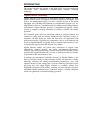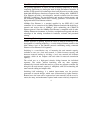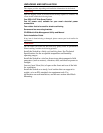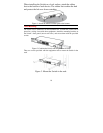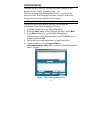
4
Fast Ethernet Technology
The growing importance of LANs and the increasing complexity of desktop
computing applications are fueling the need for high performance networks. A
number of high-speed LAN technologies have been proposed to provide greater
bandwidth and improve client/server response times. Among them, 100BASE-T
(Fast Ethernet) provides a non-disruptive, smooth evolution from the current
10BASE-T technology. The non-disruptive and smooth evolution nature, and
the dominating potential market base, virtually guarantees cost-effective and
high performance Fast Ethernet solutions.
100Mbps Fast Ethernet is a standard specified by the IEEE 802.3 LAN
committee. It is an extension of the 10Mbps Ethernet standard with the ability to
transmit and receive data at 100Mbps, while maintaining the CSMA/CD
Ethernet protocol. Since the 100Mbps Fast Ethernet is compatible with all other
10Mbps Ethernet environments, it provides a straightforward upgrade and takes
advantage of the existing investment in hardware, software, and personnel
training.
Switching Technology
Another approach to pushing beyond the limits of Ethernet technology is the
development of switching technology. A switch bridges Ethernet packets at the
MAC address level of the Ethernet protocol transmitting among connected
Ethernet or Fast Ethernet LAN segments.
Switching is a cost-effective way of increasing the total network capacity
available to users on a local area network. A switch increases capacity and
decreases network loading by dividing a local area network into different
segments, which do not compete with each other for network transmission
capacity.
The switch acts as a high-speed selective bridge between the individual
segments. The switch, without interfering with any other segments,
automatically forwards traffic that needs to go from one segment to another. By
doing this the total network capacity is multiplied, while still maintaining the
same network cabling and adapter cards.
Switching LAN technology is a marked improvement over the previous
generation of network bridges, which were characterized by higher latencies.
Routers have also been used to segment local area networks, but the cost of a
router, the setup, and maintenance required make routers relatively impractical.







